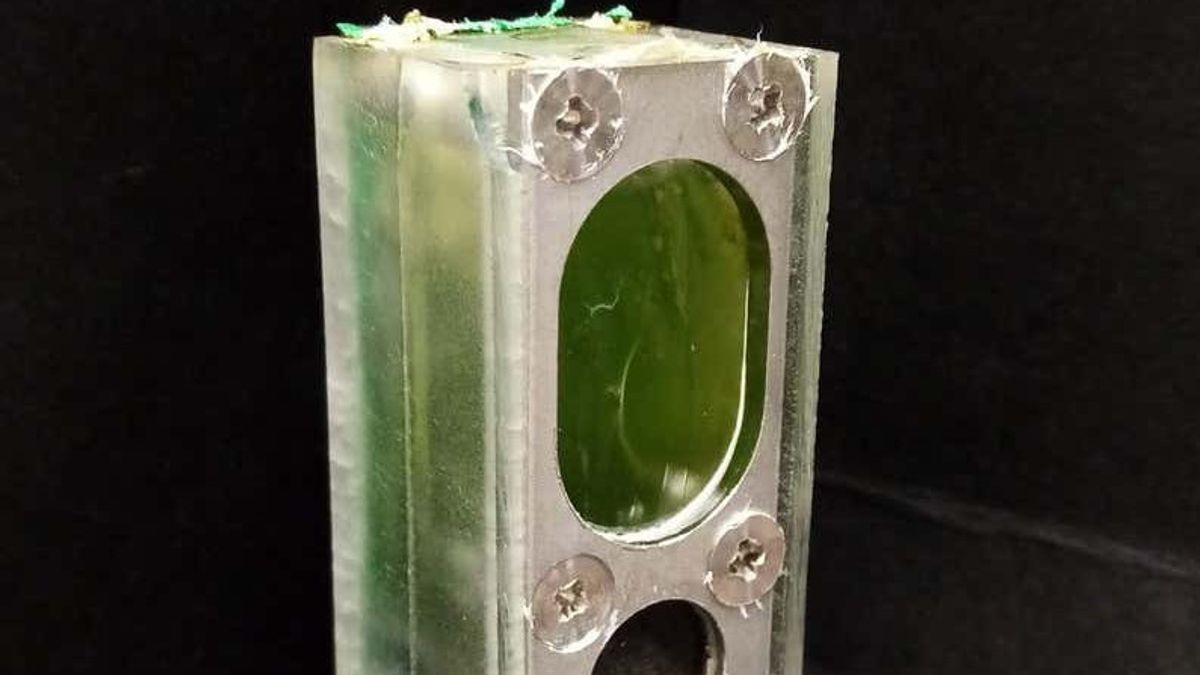
JAKARTA - Surprisingly, a blue-green algae plant sealed in a small container can power a computer for six months.
That's because algal photosynthesis produces electricity generators that can run small devices, without the need for the rare and unsustainable materials used in batteries.
Scientists from the University of Cambridge sealed colonies of cyanobacteria, commonly known as blue-green algae, in small boxes the size of AA batteries made of aluminum and clear plastic.
The small box was then left by a window at the home of the team of scientists Paolo Bombelli during the COVID-19 lockdown in 2021, and stayed there from February to August.
According to scientists, where the algae photosynthesize, it generates a tiny electric current that powers the ARM Cortex-M0+ chip.
From that research, the computer can run in 45-minute cycles calculating the number of consecutive integers to simulate a computational workload, which requires 0.3 microwatts of power per hour.
"We were impressed by how consistently this system worked over a long period of time – we thought it might stop after a few weeks, but it keeps going," said the paper's first author, Dr. Paolo Bombelli as quoted from The Verge, Tuesday, May 17.
Then the data is stored in the cloud for the researchers to analyze. There were no electrical disturbances during the six months of the experiment, and in the six months since the end, the cyanobacteria continued to generate electricity.
The system is just a proof of concept, but its creators hope that algae-powered chips can be used in the future Internet of Things (IoT) devices.
They say the advantage of using algae over traditional batteries or solar power is that it has less environmental impact and has the potential to provide sustainable power.
"The evolving Internet of Things requires increasing amounts of power, and we think this should come from systems that can generate energy, rather than just storing it like batteries," said the paper's senior author, Professor Christopher Howe.
"Our photosynthesis device does not run like a battery because it continues to use light as an energy source," he added.
Normal computer energy usage does vary based on factors such as workload and age, but it is a chunk of electricity required to run the average PC.
If a typical desktop computer were to consume, 100 watts of power per hour, it would take about 333 million algae batteries to run. This research still needs to be improved.
SEE ALSO:
The algae they use do not need to be fed, as it gathers all of their energy needs from natural sunlight, and is able to continue to generate power at night based on the energy stored during the day.
While using algae in this way is clearly unusual, it is also part of a growing area of research known as biophotovoltaics.
The goal, is to harness the power generated by biological microorganisms that naturally convert light into electricity through photosynthesis.
Finally, scientists also envision in the future, being able to use giant lilies that float on water covered in algae to act as mobile power plants alongside offshore wind farms.
The English, Chinese, Japanese, Arabic, and French versions are automatically generated by the AI. So there may still be inaccuracies in translating, please always see Indonesian as our main language. (system supported by DigitalSiber.id)














